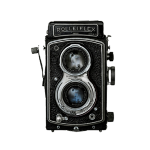Depth of Field Calculator
Calculate how much of your image will be in focus
About Depth of Field
Depth of field (DoF) refers to the distance between the nearest and furthest elements in a photo that appear acceptably sharp. Understanding and controlling depth of field is essential for creative photography.
Three main factors affect depth of field:
- Aperture - A smaller aperture (higher f-number) increases depth of field
- Focal Length - Wider lenses have inherently greater depth of field
- Focus Distance - The further you focus, the greater the depth of field
This calculator will help you determine exactly how much of your scene will be in focus based on your camera and lens settings.
Note: This calculator provides theoretical depth of field based on mathematical calculations. Actual results may vary due to:
- Lens optical design and imperfections
- Diffraction at small apertures
- Individual perception of sharpness
- Display or print size of the final image
Results are based on the circle of confusion appropriate for your selected camera format.
Understanding Depth of Field
Using Depth of Field Creatively
- Shallow Depth of Field (small f-number like f/1.4 - f/2.8): Isolates subjects from backgrounds, ideal for portraits and macro photography
- Medium Depth of Field (around f/5.6 - f/8): Balances subject isolation with context, good for small group shots
- Deep Depth of Field (f/11 and higher): Keeps most elements sharp, perfect for landscapes and architecture
Hyperfocal Distance Explained
The hyperfocal distance is the focusing distance that gives the maximum depth of field for a specific focal length and aperture. When you focus at the hyperfocal distance, everything from half that distance to infinity will be acceptably sharp.
It's an especially useful concept for landscape photography, where you want maximum sharpness from a close foreground element all the way to the distant horizon.
Tips for Different Photography Types
- Portraits: Use wide apertures (f/1.4 to f/2.8) with longer focal lengths (85-135mm) for pleasing subject isolation
- Landscapes: Use narrow apertures (f/11 to f/16) and focus at the hyperfocal distance for maximum sharpness
- Street Photography: Use zone focusing techniques with medium apertures (f/5.6 to f/8) for quick shots
- Macro Photography: Be aware that depth of field becomes extremely shallow at close focusing distances
- Group Photos: Ensure adequate depth of field to keep everyone sharp by using an appropriate aperture and positioning
Diffraction Considerations
While using small apertures (high f-numbers) increases depth of field, apertures beyond f/11 or f/16 (depending on your camera) can introduce diffraction, which reduces overall image sharpness.
If you need extreme depth of field, consider focus stacking (taking multiple images focused at different distances and combining them in post-processing) rather than using very small apertures.
